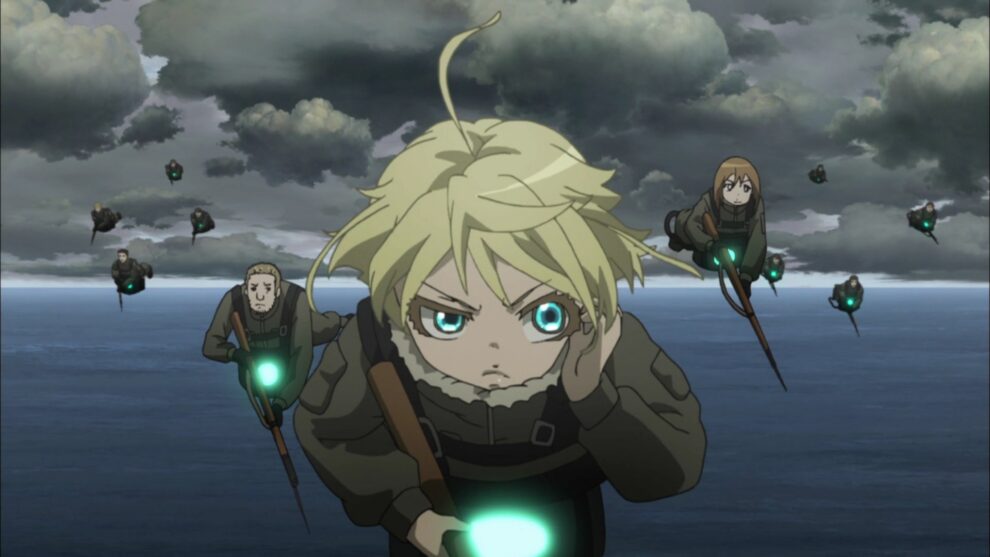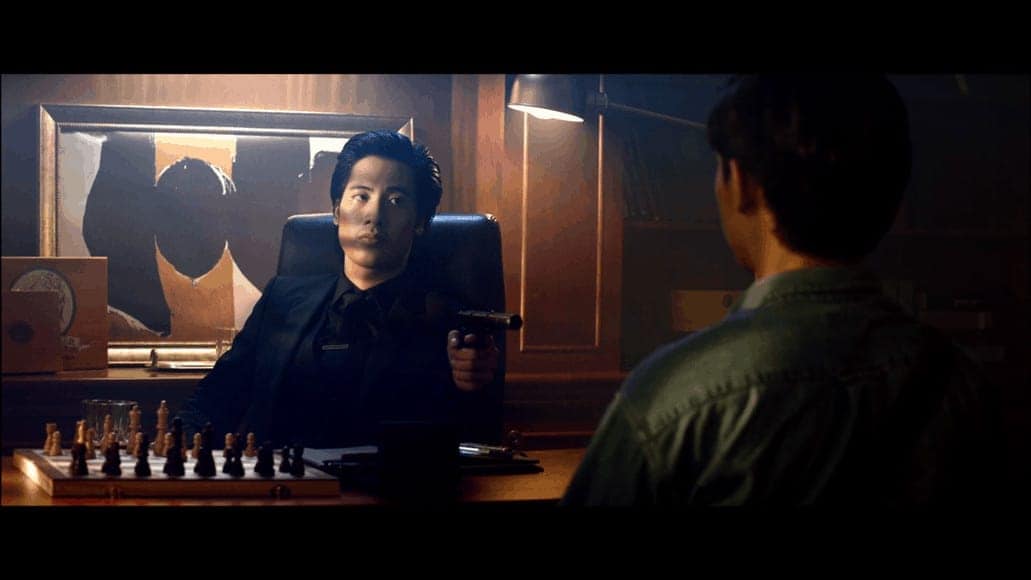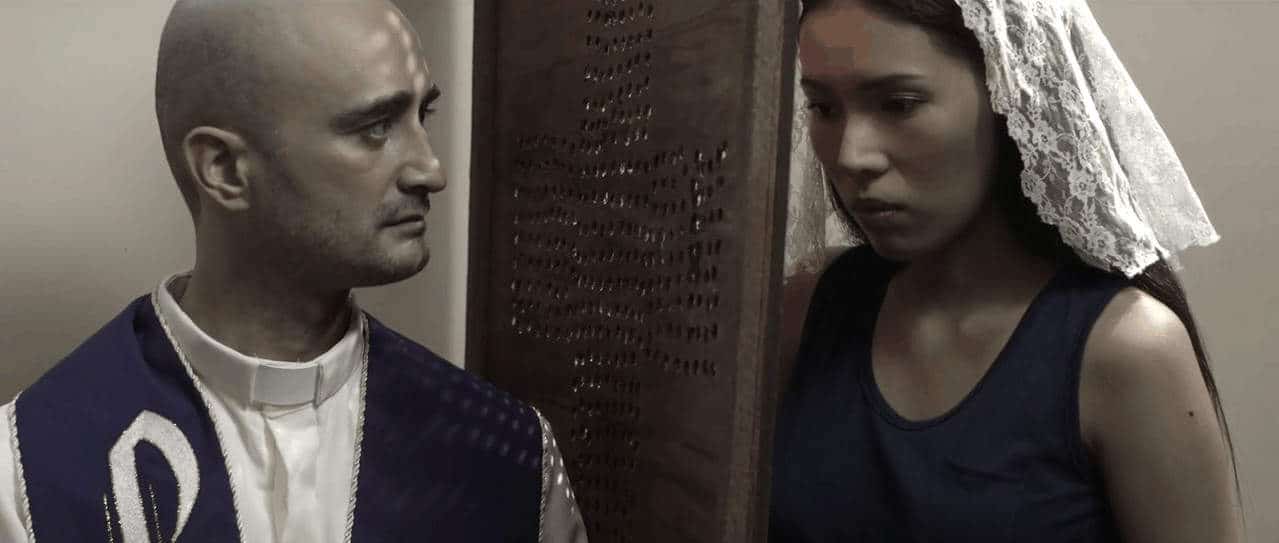Initially a light novel series written by Carlo Zen and illustrated by Shinobu Shinotsuki, “Saga of the Tanya of Evil” was adapted into a manga later on and eventually into an anime by NUT.
Watch This Title on Crunchyroll
by clicking on the image below
Although the series begins in the 1920s in an alternate Imperial Germany when World War I has been delayed and where magic has been incorporated into the military, the reality of Tanya, a little girl who has been climbing the army's hierarchy non-stop, is completely different. It turns out that in 2013 in Tokyo, the same individual was an atheist Japanese salaryman, who was murdered by a disgruntled subordinate whom he had fired. Upon his death, he is confronted by an entity that declares itself to be God and condemns the salaryman for not having ‘faith'. The salaryman disbelieves in its existence, criticizes its various statements from his perspective as an atheist and mockingly terms it as ‘Being X'. The entity decides to reincarnate the salaryman into a world where he would face sufficiently difficult circumstances to turn to Being X for help.
Thus how Tanya Degurechaff came to be, an orphaned girl that was eventually adopted into the army when she was found to be particularly strong in magic. According to Being X, if Tanya either does not die a natural death or refuses to have faith in it, her soul will leave the cycle of reincarnation and will be sent to hell for the countless sins that she has committed in her previous life. As such, the ‘girl', who still retains all her knowledge and mentality from her previous self, joins the Empire's Mage Corps and fight in the war, hoping to reach a high enough rank as fast as possible to remain far from the battlefield, and in this way avoid the risk of being killed. Even if she's now forced to speak with a young girl's lips, Tanya soon turns into a ruthless soldier who prioritizes efficiency and her own career over anything else, even the lives of those beneath her, especially those that get on her bad side. Gradually, she shapes the war to a significant degree all by herself, eventually inspiring fear (and appreciation) even in the higher echelons of the Empire.
If you like Saga of Tanya the Evil, check also this video
Yutaka Uemura directs a series that unfolds around two axes, which actually run parallel to each other. Tanya has a desperate fight against God, Being X as she calls it, who appears in sudden moments in her life, only to put her into situations that will force her to either die or ask him for help, thus proving her faith to her omnipotence. Initially, Tanya seems to be losing the battle, as her efforts to get an office job away from the war front are met with failure, both when she succeeds and when she purposefully fails. Realizing the fact, she decides instead to become all-powerful and dominate over everyone with her cruelty and unparalleled magic power. This change of tactic bares better fruit for her, as she quickly gets promoted repeatedly, while also allows her to speak and occasionally influence the higher up decision makers.
It is here that another genuine aspect of the anime comes to the fore, as watching this creature, who can only be described as cute, with her lisp, her short and thin body, blonde hair and huge blue eyes, exhibiting violent, hating, and god-cursing attitude, is an attraction throughout the 12 episodes of the series. Particularly her call against God in the last episode of the finale will definitely stay on mind of everyone who watches the anime, with her demagogic hate clearly mirroring the way Hitler won authority in Nazi Germany, a metaphor that actually permeates the whole series.
The second axis is the war of Germany against the rest of the powers of the world, in a fight that initially takes place between it and the neighboring countries, but soon extends to a more global setting. This part unfolds in two axes also, as Uemura portrays both the battles and the brutality that dominates them, and the inner politics of the countries, through a rather extensive depiction of how the various councils reach their decisions. This combination of impressive action scenes, where Nut's animation finds its apogee, intricate political webs, and the evident anti-war message that is found throughout create a rather impressive amalgam that carries the series from beginning to end. The same applies to the mix of magic and reality, which is implemented excellently in both of the aforementioned axes actually.
A note should also be made here of Second Lieutenant Visha, a refugee from the Rus' Union who has also climbed the hierarchy until she becomes adjutant to Tanya. Having served under Tanya during the Battle of the Rhine, Viktoriya is more familiar with Tanya's true personality, to which she shows fear, but also respect. As a result, she is the one more able to keep up with her compared to other soldiers, and eventually functions as the voice of logic for Tanya's growing bloodthirst. That she actually believes that Tanya has some good in her and cares for her soldiers emerges as a really interesting element here, which can be connected to the concept of faith.
The presentation of the era is excellent, with the soldiers, the cities, and the war front exhibiting an intense central European flavor. The magic and sci-fi elements also work well, while Yuji Hosogoe's character design focuses particularly on the heads and faces of the characters, in an approach that works quite well here. The fact that Tanya fosters a huge head also adds to the concept of the ‘satanic doll' that dominates her overall demeanor. Lastly, the occasional moments of humor add a welcome relief to the whole bleakness here.
“Saga of Tanya the Evil” is an impressive anime, one of the best stories of recent times, and an overall quite meaningful and entertaining title.














